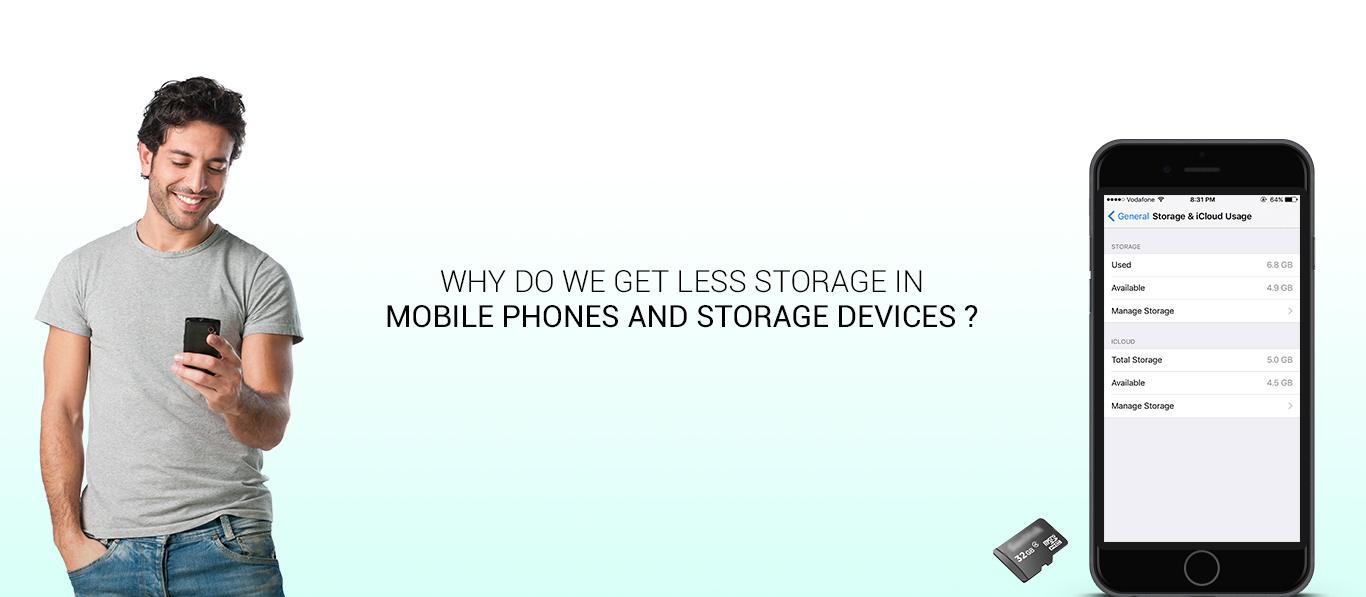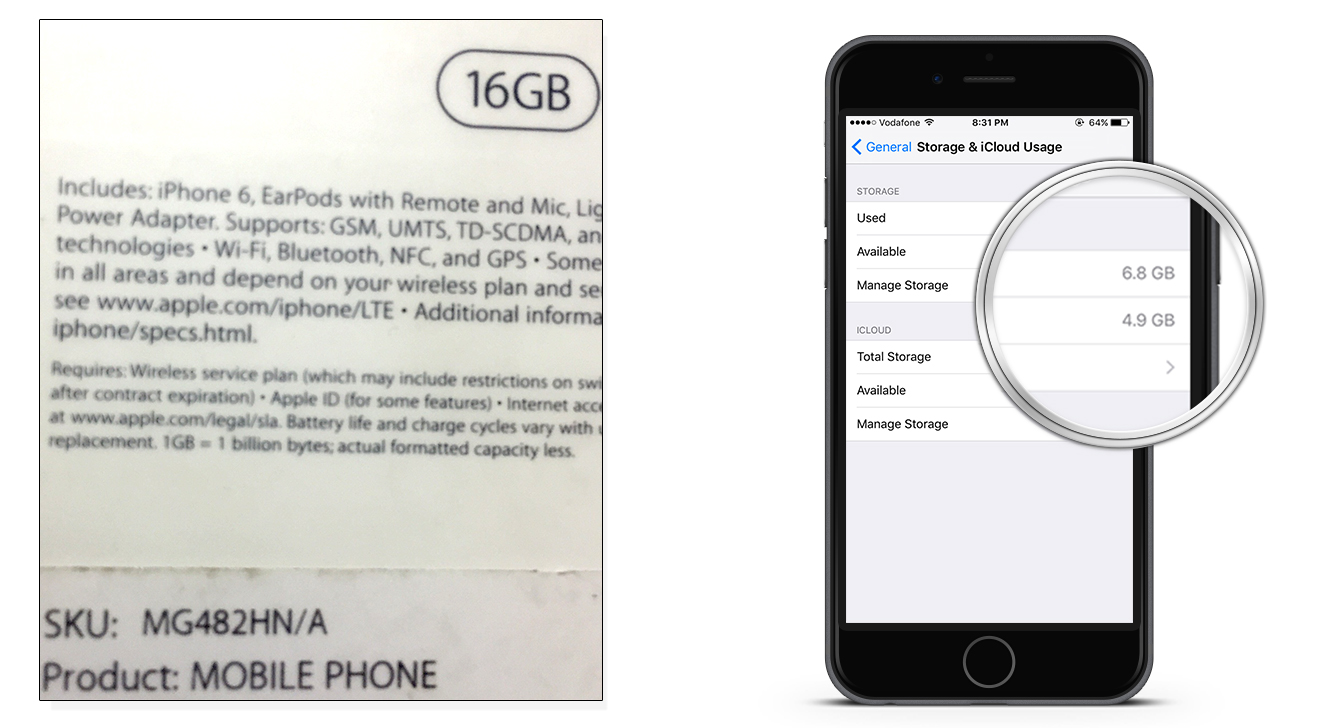Why do we get less storage in mobile phones and storage devices?

Few days back I purchased my new mobile phone which made me think why am I getting less storage than specified. There is a small logic which most of us know but have never seen it being implemented. Before explaining, I would ask, “What do you think! Why are you paying thousands of bucks for a 16 GB mobile device and still getting 12-13 GB?” Your answer will be ” It might be because of the operating systems being installed in your devices.” It is true but you will be shocked when you know that only some portion is used by the operating system. The rest storage space gets wasted in the calculation.
Now, let me tell you the exact calculation, “Hardware manufacturers calculate it differently, software does it differently.” We count 1GB different while hardware manufacturers do it differently. We know 1 GB=1024 MB i.e. 1 GB= 1,073,741,824 bytes but phone makers count it as 1GB=1000MB i.e. 1,000,000,000 bytes. When you purchase a new iPhone it will be written at the back of the box 1GB=1000MB. So you only get 1000 MB when you think you are getting 1024 MB. Now suppose you purchase a 16 GB iPhone device, then according to you, it should be (16 * 1073741824) bytes, but you get (16,000,000,000 /1073741824) = 14.9 GB.

Storage space used by the operating system
Now, out of 14.9 GB space available, some storage space is consumed by the operating system and other files, including pre-installed applications. It depends on the mobile phone manufacturers the storage they consumed. The pure stock android device manufacturers gives you storage around 12.5 GB while some others give you only 9-10 GB.
The same is applicable in the case of storage devices like memory cards. Since it doesn’t have to share its space with the operating system, you get a little more storage. So, next time when you buy a new mobile phone, just think of this calculation and then buy. Don’t just go by what is printed on the specification sheet. With the same 16GB storage, one manufacturer can give you more space than the other one.




I don’t think it is similar as you are saying. Yes, it is true that when we talk about secondary memory, then 1GB = 1000 MB, but I don’t think it is because they are calculating it this way, but in fact rest of the memory is actually invested in memory locations addressing (that is done in hexadecimal code). So, every memory location is addressed using 16 bit hexadecimal code and not only in phones, similar phenomena can be seen in HDD’s also… as after formatting (re-addressing of memory locations) you are left with left space than mentioned
Also after exploring more, I found that there are two different units MB (Megabytes) and MiB (Mebibytes) 1GB = 1024MB, but 1GiB = 1000 MiB and in digital electronics world, they are using GiB more inistead of MiB.
BTW, I follow your blogs and they are really informative 😉
Hello Sharad, It was nice hearing that you follow my blogs regularly. Regarding this calculation, I would like to tell that the calculation has been verified from apple’s source website. The calculation is done in this way only. The concept of GiB and GB was there since start in digital electronics but the users were not known to it.
Interesting!
Thanks.
Very informative!
Thanks.
Nice